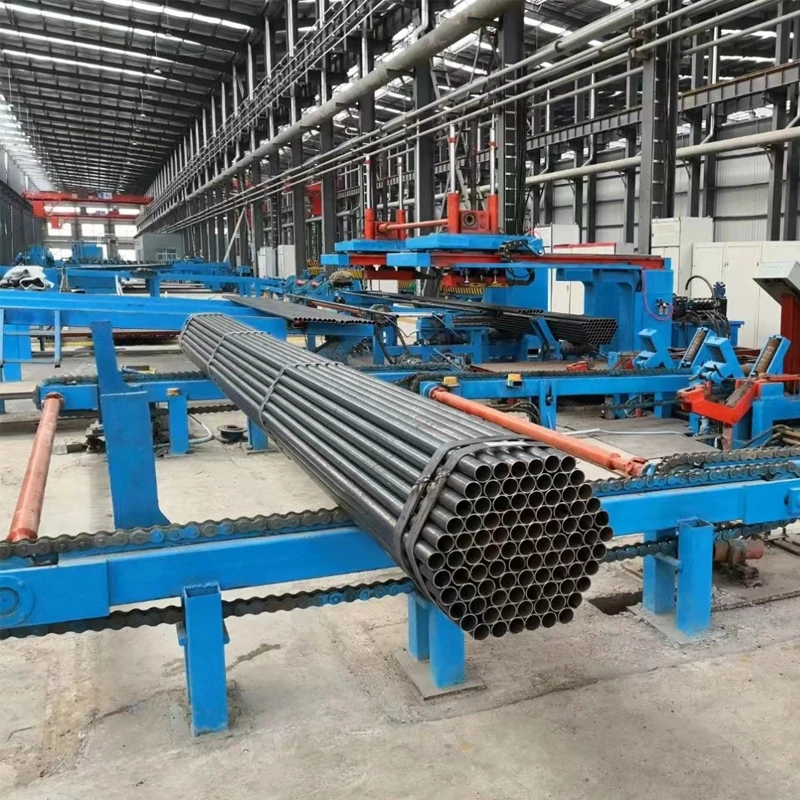Efficient Production Techniques for Standing Seam Roof Panel Rolling Machines
Understanding Standing Seam Rolling Machines
In the field of metalworking and construction, standing seam roofs are highly regarded for their durability, weather resistance, and aesthetic appeal. A critical player in the production of these roofs is the standing seam rolling machine. This specialized equipment facilitates the creation of continuous metal seams that provide a robust and efficient roofing solution.
What is a Standing Seam Roof?
A standing seam roof consists of vertical metal panels that are connected at the seams. Unlike traditional roofing methods that use adhesive or fasteners visible on the surface, standing seam roofs utilize concealed fasteners. This design not only enhances the roof’s appearance but also greatly improves its watertight capabilities. The vertical seams rise above the flat areas of the roofing panels, offering better water drainage and preventing leaks – a crucial asset in areas prone to heavy rainfall.
The Role of Standing Seam Rolling Machines
Standing seam rolling machines play an instrumental role in the manufacturing process of these roofing panels. These machines are designed to shape and form metal coils into precise standing seam profiles. The process begins with feeding flat metal sheets into the machine, which then rolls and shapes the material to produce the desired seam configuration.
One of the prominent features of standing seam rolling machines is their ability to operate continuously. This means that they can produce long lengths of metal roofing panels without seams, minimizing waste and ensuring structural integrity. The efficiency of these machines often translates into significant cost savings for manufacturers and contractors alike.
Key Features and Benefits
1. Versatility Standing seam rolling machines can process various materials, including aluminum, copper, and steel, making them suitable for different architectural styles and climatic conditions.
2. Customization Many modern machines come with digital controls that allow operators to adjust settings for different profiles and dimensions. This flexibility enables manufacturers to meet specific client needs and design preferences.
standing seam rolling machine

4. Durability Given the demanding environments in which standing seam roofs are installed, rolling machines are built to withstand rigorous usage, ensuring longevity and reliability in production.
The Manufacturing Process
The manufacturing process with a standing seam rolling machine involves several key steps
1. Material Preparation Before production, metal coils must be prepared and cut to specific widths as per the project requirements.
2. Feeding and Rolling The prepared coils are fed into the machine, where rollers gradually shape the metal into standing seam configurations.
3. Notching and Crimping Depending on the design, additional processes such as notching and crimping may be performed to ensure accurate fittings and connections between panels.
4. Quality Control After production, panels undergo quality checks to ensure they meet industry standards in terms of thickness, strength, and finish.
Conclusion
The standing seam rolling machine is an indispensable asset in the modern roofing industry. By streamlining the production of standing seam roofs, these machines contribute not only to efficiency but also to the overall quality of roofing systems. As demand for sustainable and durable roofing solutions continues to rise, the standing seam rolling machine will undoubtedly remain at the forefront of metal roofing technology. Whether it be for residential, commercial, or industrial applications, the innovations brought about by these machines will shape the skylines and architecture of the future, underscoring their pivotal role in the construction sector.
-
High Frequency Straight Seam Welded Pipe Production Line-BzZhou Xinghua Machinery Equipment Manufacturing Co., LTD.|line pipe steel&welded gas pipeNewsJul.30,2025
-
High Frequency Straight Seam Welded Pipe Production Line-BzZhou Xinghua Machinery Equipment Manufacturing Co., LTD.|High Precision&Automated SolutionsNewsJul.30,2025
-
High Frequency Straight Seam Welded Pipe Production Line - BzZhou Xinghua Machinery Equipment Manufacturing Co., Ltd.NewsJul.30,2025
-
High Frequency Straight Seam Welded Pipe Production Line-BzZhou Xinghua Machinery Equipment Manufacturing Co., LTD.|Precision Welding, High EfficiencyNewsJul.30,2025
-
High Frequency Straight Seam Welded Pipe Production Line|BzZhou Xinghua|Precision Welding&EfficiencyNewsJul.30,2025
-
High Frequency Straight Seam Welded Pipe Production Line - BzZhou Xinghua|Precision Engineering&EfficiencyNewsJul.30,2025


